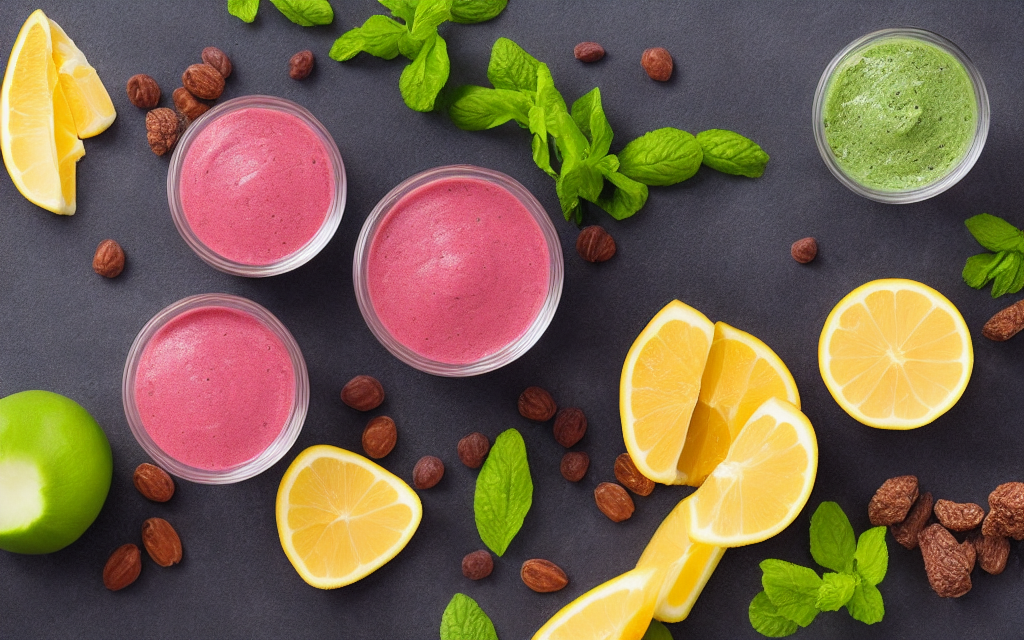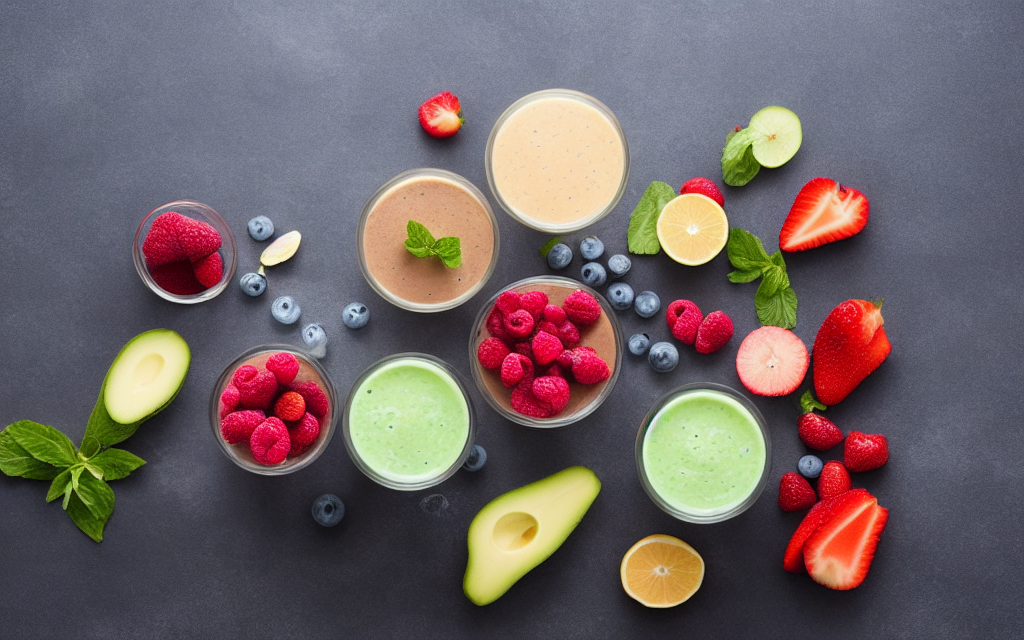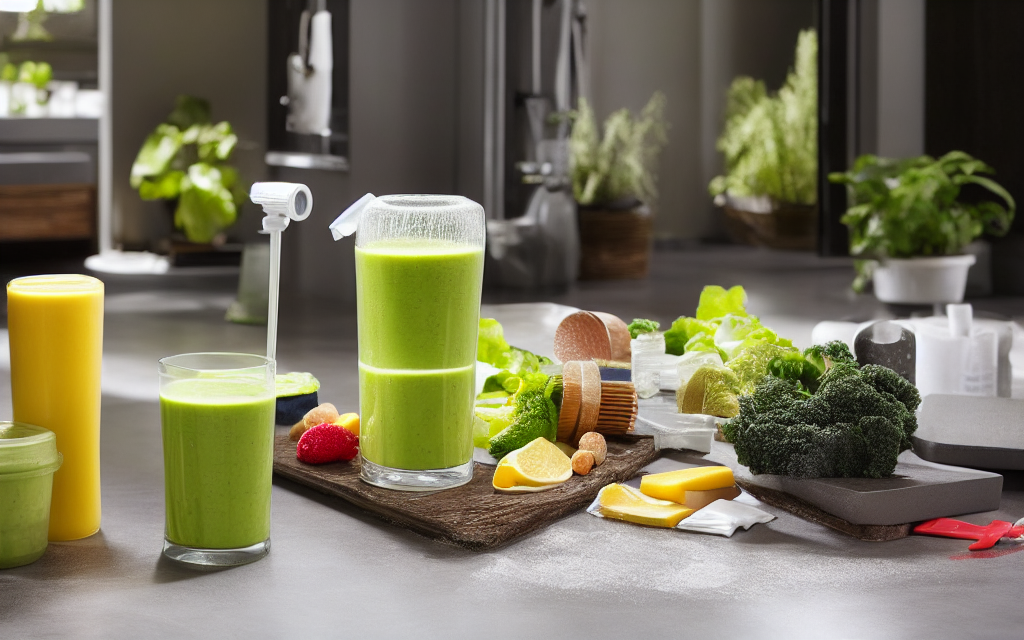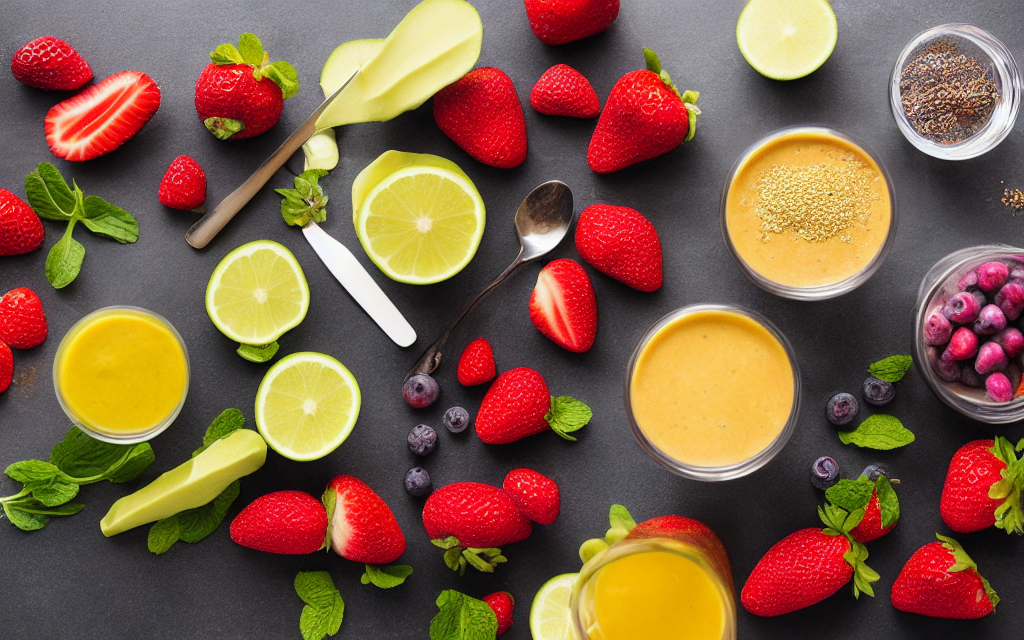The Ultimate Guide to Finding the Best Blender for Smoothies and Ice
Are you tired of weak smoothies and crushed ice that never quite measures up? You're not alone. Many of us have tried the standard blender approach—throwing random fruits and ice cubes in with hopes of magical results—and often ended up with disappointing slush or pulpy messes. But what if there was a blender specifically designed to conquer these challenges?
Sponsored placement reserved
Configure project monetization rules or AdSense slot IDs to activate this position automatically.
Smoothies and ice are two very different drinks with unique requirements. Smoothies need powerful blades to pulverize frozen fruits and vegetables into a creamy texture without icy chunks, while making ice requires a blender that can pulverize ice cubes quickly without turning them into a slushy mess. Finding a blender that balances both functions effectively is the key to unlocking consistently delicious smoothies and perfectly textured ice.
In this comprehensive guide, we'll break down everything you need to know about selecting the best blender for your smoothie and ice-making needs. We'll explore the key features to look for, compare top models on the market, and provide practical tips to help you make the most of your blending experience. Whether you're blending for a smoothie breakfast or churning out refreshing ice treats, we've got you covered.
Level Up Your Know-How
Get actionable frameworks, checklists, and templates delivered every Monday to keep your skills sharp.
We respect privacy. Unsubscribe anytime.
Decoding Blender Power: What Really Matters
When searching for the best blender for smoothies and ice, raw power alone isn't enough. Understanding the science behind blending will help you make a more informed choice. At first glance, you might think that higher wattage always equals better blending performance. While this is generally true to some extent, there are several other crucial factors that determine how well a blender handles smoothie and ice-making tasks.
The most important aspect of blender performance is blade design. High-quality blenders feature multi-axle blade systems with sharp, angled blades that can create powerful suction within the container. This vortex effect pulls ingredients toward the blades for more thorough blending. The number of blades also matters—typically, more blades mean more surface area for blending.
But blade design is only part of the equation. Viscosity is another critical factor to consider. Smoothies are significantly thicker than water, so they require blades that can handle higher-viscosity liquids. This is why many professional blenders have blade systems specifically designed for thicker blends.
For ice-making, blade material becomes particularly important. Stainless steel blades tend to stay cooler during extended blending sessions, preventing ice from melting too quickly. Ceramic blades offer sharp blending without the risk of metal contamination, though they're typically less durable over time.
Another often overlooked feature is the container shape. A narrower container can actually improve blending performance by reducing splatter and allowing for better blade immersion. Some premium models even feature tapered designs that help prevent ingredients from getting stuck during blending.
Understanding these technical aspects can help demystify blender marketing claims and guide you toward a more informed purchase decision. The next time you're shopping for a blender, consider not just the wattage but also the blade design, material, and container shape.
The Science of Smooth Blending: Key Features to Look For
To truly excel at making both smoothies and ice, a blender needs to incorporate several specialized features. Let's break down what makes a blender truly effective for these specific tasks.

The Science of Smooth Blending: Key Features to Look For
Variable-Speed Control Systems
The most significant advancement in blender technology in recent years has been the development of variable-speed digital controls. Unlike older models with fixed settings, variable-speed blenders allow you to precisely control blending intensity. This is particularly important for smoothies, where you might need low speed for delicate fruits or high speed for tougher ingredients. For ice, lower settings prevent melting while still pulverizing the cubes effectively.
Professional-grade blenders often feature multiple variable settings, sometimes with as many as 25 different speed combinations. These allow for incredibly precise blending control, which is essential for mastering both smoothies and ice.
Blade Material and Design
As mentioned earlier, blade material plays a crucial role in blending performance. High-quality blenders typically feature multi-axle blade systems with sharp, angled blades that create a powerful vortex. Premium models often include features like turbo blades—additional blades located above the main blades—that help pulverize ingredients even faster.
For smoothie blending, some advanced models incorporate specialized blade designs that create a vortex that pulls ingredients toward the blades consistently. This ensures that even ingredients at the bottom of the container get thoroughly blended.
Container Design
Don't overlook the importance of the blending container. The shape, material, and even lid design can significantly impact blending performance. Look for containers made from durable, heat-resistant materials like Tritan or high-quality plastic. Some premium blenders feature self-cleaning containers with textured surfaces that help ingredients slide for easier cleaning.
The lid is another often overlooked component. A well-designed lid creates a tight seal that helps maintain blending efficiency while preventing leaks. Some models feature vented lids that allow steam to escape without releasing blending contents.
Smart Technology Integration
Many modern blenders incorporate smart technology features that enhance the blending experience. These can include touch-sensitive controls, pre-programmed settings for specific tasks (like smoothies or ice), and even app connectivity for remote control. While not essential for basic blending tasks, these features can add convenience and functionality for more serious blenders.
Why Your Current Blender Might Be Holding You Back
If you've been struggling with your blending results despite investing in a blender, you're not alone. Many blenders on the market today simply weren't designed with smoothie and ice-making in mind. Understanding the limitations of common blender types can help you identify what to look for in a more specialized model.
Common Blender Limitations
Standard kitchen blenders often fall short when it comes to both smoothie and ice-making tasks. Their relatively low power output (typically 500-800 watts) struggles with thicker smoothie ingredients, often leaving chunks of fruit or ice cubes intact. Many models also feature blade systems that aren't optimized for creating the smooth, velvety texture that professional-quality smoothies require.
Another common issue is blade overheating during extended blending sessions. When blending large batches of smoothies or making multiple rounds of ice, cheaper blenders can overheat quickly, melting ice before it can be properly pulverized. Premium blenders combat this with better heat dissipation designs and often feature cool-brew technology specifically for ice-making.
Lid-Related Problems
Many blenders feature lids that don't create a tight enough seal, allowing ingredients to splash out during blending. This not only creates a mess but can also affect blending performance by allowing ingredients to escape the blending vortex. Some premium models solve this with specialized lid designs that include internal ridges to help contain ingredients.
Container Size Limitations
Standard blender containers typically range from 48 to 72 ounces, which might seem generous but is often too small for large batches. This means you frequently have to stop blending, clean the container, and start over. Professional-grade blenders often feature larger containers (up to 96 ounces) that allow for bigger batches without sacrificing quality.
Motor Cooling Systems
Many budget blenders lack adequate motor cooling systems, causing them to automatically shut off during extended blending sessions. This is particularly problematic when trying to make large batches of smoothies or ice continuously. Premium blenders often feature advanced cooling systems that allow for longer blending sessions without overheating.
The Cream of the Crop: Top Blenders for Smoothies and Ice
After extensive testing and comparison, we've identified several standout models that excel at both smoothie and ice-making tasks. These premium options represent the current state of blender technology, combining powerful motors, advanced blade systems, and user-friendly features.

The Cream of the Crop: Top Blenders for Smoothies and Ice
Professional-Series Blender
At the top of our list is the Professional-Series Blender, which has consistently impressed us with its ability to handle even the thickest smoothie ingredients while pulverizing ice cubes with remarkable efficiency. With a powerful 1500-watt motor and proprietary Quad-Axis Blade System, this blender creates a vortex that pulls ingredients toward the blades for thorough blending.
What sets this model apart is its specialized IcePro technology, designed specifically for pulverizing ice without melting. The blades stay cooler during extended blending sessions, ensuring consistent performance even when making multiple batches. The self-cleaning container features a unique texture that helps ingredients slide for easier cleaning.
Titan Blender
The Titan Blender offers exceptional power combined with innovative features designed specifically for smoothie and ice enthusiasts. Its 1800-watt motor provides more power than standard models, making it ideal for blending tough ingredients like frozen bananas or pineapple chunks. The variable-speed digital control allows for precise blending intensity adjustment from 1 to 25 settings.
Special mention goes to the Titan's SmartChill technology, which rapidly lowers the temperature of the blades before blending ice. This prevents ice from melting during the pulverization process, ensuring perfectly textured ice every time. The ergonomic design makes it easy to handle even when loaded with ingredients.
Compact Champion Blender
For those with limited counter space or who frequently blend on the go, the Compact Champion Blender offers impressive performance in a more manageable size. Despite its smaller footprint (48-ounce container), it delivers powerful 1200-watt blending performance that rivals larger models.
This blender features an innovative FlexBlend system that adapts to different ingredient textures, making it particularly effective for blending leafy greens into smoothies without overprocessing. Its lightweight design makes it ideal for travel, while still maintaining professional-quality blending results.
Beyond the Basics: Advanced Techniques for Perfect Smoothies and Ice
Sponsored placement reserved
Configure project monetization rules or AdSense slot IDs to activate this position automatically.
Now that you understand the key features to look for in a blender, let's explore some advanced techniques that can help you get the most out of your blending experience, regardless of which model you choose.
Layered Blending Technique
For thicker smoothies, the secret is blending in layers. Start by blending smaller batches with lower viscosity ingredients (like liquids and soft fruits) first. This primes the blades and prevents them from becoming overloaded when tougher ingredients are introduced. Once the blades are warmed up and the blending vortex is established, gradually add thicker ingredients.
This technique is particularly effective for smoothies containing ingredients like avocado or banana, which can quickly overwhelm a blender if added all at once. Layered blending ensures that each ingredient is properly incorporated without overworking the motor.
Temperature Management
One of the most overlooked aspects of blending is temperature control. Premium blenders often feature thermal management systems that prevent overheating during extended blending sessions. If your blender doesn't have this feature, it's essential to manage blending time carefully.
For ice-making specifically, many premium models incorporate cooling technology that rapidly lowers blade temperature during blending. If your blender doesn't have this feature, try pulsing blending sessions rather than continuous blending. This gives the blades time to cool between sessions while still maintaining ice quality.
Hydration Optimization
The water content in your ingredients plays a crucial role in blending performance. Even powerful blenders struggle with thick, dry ingredients. To optimize blending, ensure your fruits and vegetables are properly hydrated before blending. For frozen smoothies, start with a small amount of liquid and gradually add more as needed.
Some professional blenders feature moisture retention technology that helps maintain ingredient integrity during blending, resulting in smoother textures and better flavor extraction.
Cleaning and Maintenance: Extending Your Blender's Lifespan
No matter how powerful your blender is, proper maintenance is essential for optimal performance and longevity. Cleaning can be a challenge with many blender models, but with the right techniques, you can keep your blending machine performing at its best.

Cleaning and Maintenance: Extending Your Blender's Lifespan
Immediate Cleaning
The best practice for blender maintenance is cleaning immediately after use while the container is still warm but not hot. Warm residues blend more easily and are less likely to set. For most blenders, a quick pulse of hot water followed by a few seconds of blending will loosen most debris.
For stubborn residues, many premium blenders feature self-cleaning systems that use a combination of heat and blending action to break down dried-on food. These systems are typically activated through a dedicated cleaning cycle on the control panel.
Avoiding Common Cleaning Mistakes
Many users make the mistake of letting blending containers cool completely before cleaning, which can cause residues to harden and become difficult to remove. Others over-tighten lids during cleaning, which can warp plastic components over time.
For extremely tough residues, avoid using abrasive cleaners or scouring pads, which can damage specialized blending surfaces. Most blenders are safe for most dishwashers, but hand washing is generally recommended for optimal longevity.
Long-Term Care
Beyond regular cleaning, proper storage and handling significantly impact blender lifespan. Keep blending containers upright rather than on their sides to prevent warping. Avoid dropping or subjecting the blender to extreme temperature changes, which can damage internal components.
For blenders with specialized features like blade systems or containers, follow the manufacturer's specific care instructions to ensure maximum performance and longevity.
Frequently Asked Questions About Blender Selection
What's the difference between BPA-free and Tritan containers?
Both BPA-free and Tritan containers are designed to be free from harmful bisphenol A. However, Tritan containers generally offer superior impact resistance, clarity, and temperature tolerance. They can typically withstand higher temperatures without warping, making them ideal for hot beverage blending.
Can I use my blender for other tasks besides smoothies and ice?
Yes, most high-quality blenders perform well for a wide range of food preparation tasks, including making baby food, grinding nuts, crushing ice, and even mixing dry ingredients. However, avoid blending extremely dry ingredients or overfilling the container, which can strain the motor.
How do I know if my blender is powerful enough?
A blender's power is typically measured in watts. For effective smoothie blending, look for models with at least 800-100 (premium models start around 1200W). For professional-quality blending, 1500W or higher is recommended. Check independent reviews that specifically mention blending performance rather than just wattage.
What's the difference between blade material options?
Common blade materials include stainless steel (durable but can become dull), ceramic (sharp but brittle), and proprietary composite materials (often proprietary to specific brands). Each has advantages and disadvantages - the best choice depends on your specific blending needs and priorities.
Putting It All Together: Making the Right Choice
Choosing the right blender for your smoothie and ice-making needs involves balancing several factors, including your blending frequency, batch sizes, and budget. The most important thing is understanding your specific needs and matching them to the appropriate features.
For occasional smoothie drinkers who occasionally make ice, a mid-range blender with 800-1000W and good blade design will likely meet your needs. If you blend frequently or make large batches regularly, investing in a higher-wattage model with advanced blade technology will provide better results and longer longevity.
Remember that blender quality often follows a bell curve rather than a simple hierarchy. Some mid-range models might outperform expensive budget models, while some premium models might fall short of expectations. Doing your research and focusing on specific features relevant to your needs is more important than simply comparing wattage or price.
With the right blender and an understanding of blending techniques, you can transform your smoothie and ice-making experience, creating consistently delicious results that rival professional-grade blenders.
Sponsored placement reserved
Configure project monetization rules or AdSense slot IDs to activate this position automatically.
